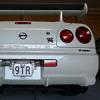VINS you want "fasted"
Announcements
-
Similar Content
-
Latest Posts
-
You now say stumble, but you said cut out before. Will it slow rev through the cut/stumble? What gap were your spark plugs set to when you them in?
-
I had double clamped all the pipes but I checked them over any way, everything tight and secure. feels and sounds like a electrical short/failure, as it is an abrupt and aggressive stumble, that instantly comes and goes right at 4k mark...like clock work fuel pump and filter are new new coils and plugs injectors where cleaned and tested 200 miles plus ago no black smoke cleaned MAF same results, other ideas? some other sensor?
-
Yes, just without the annoying use of the word hybrid. We stopped using that term 20 years ago when we realised it meant different things to different people. Even "highflow" can represent more than one way of achieving the goal of getting more flow out of a turbo. But at least it says what it does on the box.
-
OH, when they say "solid buckets", I always interpeted that as "shimless". (Which is not the same as the "shimness word I invented above to represent the same idea that the buckets act as shims also!!). Still the same problem though. So it appears that buying a "kit" from Tomei is a two step process. Makes sense. Doesn't make sense in the context of a "kit" though.
-
Wanted to add some of my R33 GTST R34 GTR wheels, 18x9 ET30 with 255/35/R18 PS4S' BBS RE-V7 029 18x9.5 ET22 with 255/35/R18 PS4S' Needs a bit of camber
-






Recommended Posts
Create an account or sign in to comment
You need to be a member in order to leave a comment
Create an account
Sign up for a new account in our community. It's easy!
Register a new accountSign in
Already have an account? Sign in here.
Sign In Now